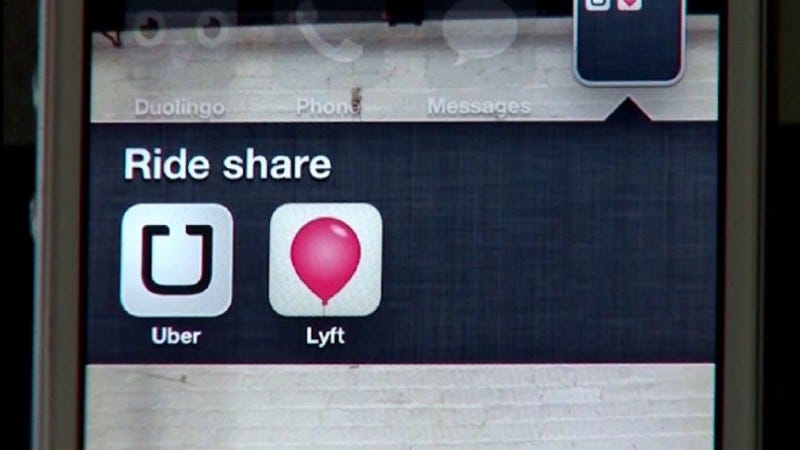Is Uber really in a fight to the death?
In recent days, since their PR troubles, there has been much discussion as to why Uber seems to be so aggressive. Reasons ranged from being…

In recent days, since their PR troubles, there has been much discussion as to why Uber seems to be so aggressive. Reasons ranged from being inept, to the challenges of fighting politics against taxi regulations to a claim that Uber’s market has a ‘winner take all’ nature. It is this last one that is of particular interest because it suggests that Uber has to fight hard against competitors like Lyft or it will lose. It also suggests that Uber’s $20 billion odd valuation is based on beliefs that it will win, and win big.
I am not sure that this is really the case. Despite the name ‘Uber’ connoting, ‘one Uber to rule them all,’ the theory underlying the notion of winner take all is rather special and is far from being proven in cases like this.
So let’s review the ‘winner take all’ theory. Here is the logic of Ben Thompson who put forward this argument: suppose that Uber has the majority of riders that means that more drivers will serve Uber customers, those more drivers mean that Uber’s service level will improve (that is, there are more cars available, more quickly), that better service drives Uber to have even more riders and the cycle continue. However, what is a virtuous cycle for Uber, Thompson claims, is a vicious cycle for Lyft.
Said that way, the effects seem to make sense. But the simple story ignores price (although Thompson does discuss it). He argues that perhaps consumers will be ‘sticky’ in the sense that they will adopt one service and they will choose the service that offers the best trade-off for ease of getting a ride and the price of that ride. If the larger service is trying to grab the entire rider market, then it can match price with the smaller one and still win (because its ‘product’ is of higher quality). But there will come a point where that extra share isn’t worth it relative to their ability to price their product higher without losing ‘sticky’ customers who derive value from their greater driver availability. This suggests an end to that dynamic and probably an end well before Uber has 100 percent of the rider market.
Even accepting this, price is a double edge sword. The lower Uber’s price and the more other drivers are on Uber, the less incentive an additional driver as to join them rather than Lyft. To a driver, fewer competitors on the same platform means more profit. You’ll find a ride quicker and so there will be less downtime. The point here is that lots of drivers being available means lots of drivers being without rides and that is bad news for drivers.
So while there may be forces that could pull riders to coordinate on one platform, the very same forces must push drivers to move towards the smaller platform.
This assumes, of course, that drivers are sticky or exclusive to one platform. For taxis and limos, Uber is it for the moment. So what we are talking about is UberX versus Lyft. But, in the absence of either contractual exclusivity or incentive payments that give you exclusivity by proxy, a given driver has an incentive to be available on both networks and to accept the first ride that comes along. In this situation, whether a driver is available on UberX or Lyft is irrelevant in the aggregate. Both systems will have precisely the same availability. And in this case, size will not matter for consumers in terms of their choice of platform … only price. And on that score, neither platform can profit from having a lower price than the other as this will, in effect, reduce their pool of available drivers.
Thus, when you sort through the equilibrium effects of all this (as economists are want to do) we have the conclusion that Uber and Lyft aren’t fighting for drivers at all but are competing for customers. That is, of course, unless there are moves towards exclusivity or, for that matter, other things that make drivers more likely to favour one platform over the other. I suspect that is still to come.
I should also add that I am not at all sure Thompson’s customer ‘stickiness’ assumption is right. The one thing taxi apps have done is make signing up and using them easy. For instance, it is far easier for an Uber user to check Lyft if a ride isn’t available than it is for a Starbucks drinker to pop down to Dunkin Donuts when the queue is too long. Given that, as I argue above, availability may look the same on both platforms in the long-run, then the consumer’s decision will all come down to price.
My point here is that there is a ton of innovation going on. But fundamentally, the market is about the riders (demand) and drivers (supply) with the platforms are intermediaries. And this may well be a market where the edges win and the intermediaries can capture value by competing in the market and having better service quality and not by competing for the market and a long-term monopoly bottleneck that they hope to get with it.



